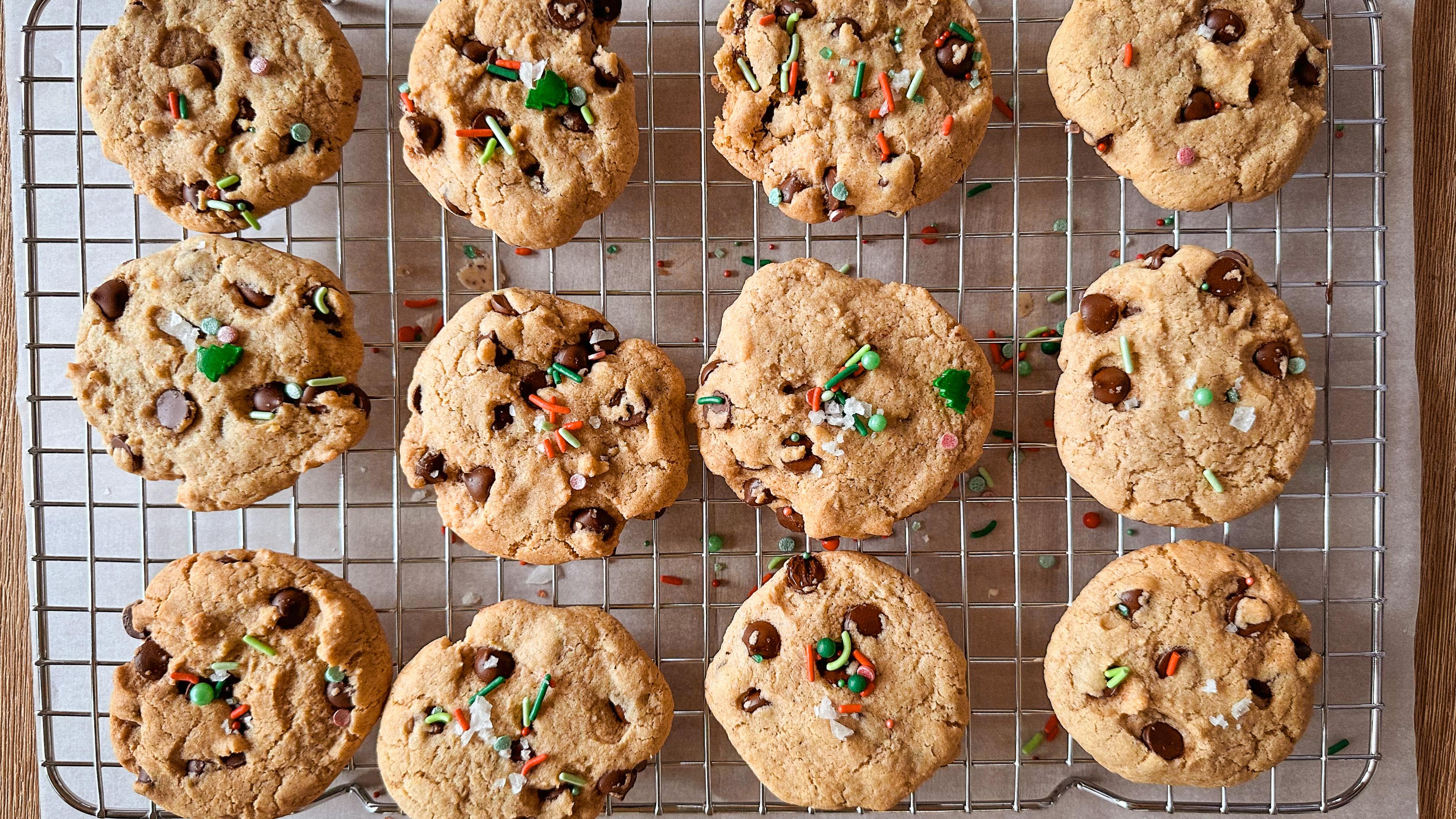Allergy-friendly Holiday Cookie Recipes

Shanthi Appelo, MS, RD
| 3 min read

Homes filled with scents of baking spices, gingerbread houses topped with icing and candies, star-shaped cookies doused in sprinkles: baking cookies with loved ones is part of many families’ holiday traditions. Whether they’re baked from scratch with an old family recipe or from a boxed mix, this activity brings people together and builds memories. For those with food allergies, baking can pose a challenge. Among the list of top allergens are milk, eggs, tree nuts, peanuts and wheat – all ingredients common in cookie recipes.
When baking for someone with dietary restrictions, keep these tips in mind:
Avoid cross contamination. Trace amounts of an allergen can cause symptoms in someone with food allergies. Be sure to clean surfaces and wash hands with warm soapy water before touching safe foods. Use separate cookware and utensils when handling allergy-free ingredients. For example, if butter is spread on wheat toast and then the knife is placed back into the butter, the butter is no longer safe and will contain traces of wheat.
Read ingredient lists. According to the U.S. Food and Drug Administration, “the name of the food source of a major allergen must appear: in parentheses following the name of the ingredient. Examples: ‘lecithin (soy),’ ‘flour (wheat),’ and ‘whey (milk)’ or immediately after or next to the list of ingredients in a ‘contains’ statement. Example: ‘Contains Wheat, Milk, and Soy.’”
Pay attention to toppings. Common baking additions and toppings may have ingredients with allergens. For example, while icing may seem like a simple ingredient, it may contain dairy, traces of nuts and wheat. The same applies to chocolate chips and candies.
Baking is a science, and most ingredients play an important role in the structure and texture of the final product. Substitutes may therefore taste and appear different than the original recipe.
Here’re some common substitutes to try:
Eggs. If the egg's intended purpose in a recipe is to bind ingredients together, a tablespoon of apple sauce or almond butter can be substituted. Egg replacers often made from potato starch and tapioca flour are becoming more common in grocery stores and can also be used.
Flour. Gluten-free 1:1 baking flour blends tend to mimic wheat flour the best in recipes. However, flours made from almonds, cashews, chickpeas, rice or potatoes are also options. Keep in mind that nut-based flour alternatives may produce a coarser texture.
Milk. Use a milk substitute such as oat, almond, rice or cashew milk if cow’s milk cannot be used. Keep the fat content in mind. For example, if a recipe calls for full fat milk, use a creamy oat milk.
Buttermilk. Use a milk substitute and add a tablespoon of lemon juice per cup of milk. Stir and allow to sit for five minutes before use.
Try one of these inclusive holiday cookie recipes to help accommodate friends and family with dietary needs:

The chocolate chip cookie is a classic for a reason. In this recipe, cardamom sweet, peppery and aromatic flavor is added to bring a unique flavor. The cookies are topped with sea salt to create a balance in flavor. These cookies are free of milk, eggs, tree nuts, peanuts, wheat, soy and sesame. This recipe yields ~12 cookies and was adapted from Verybestbaking.com.

Shortbread cookies are a favorite for many because of their crisp and balanced nature. Using almond flour in the recipe adds a unique nuttiness. Simply dip the cookies in melted allergen-free chocolate morsels and top with crushed candy canes. These cookies are free of milk, eggs, tree nuts, peanuts, wheat, soy and sesame. This recipe yields ~24 cookies and was adapted from this recipe at minimalistbaker.com.





